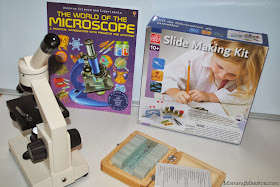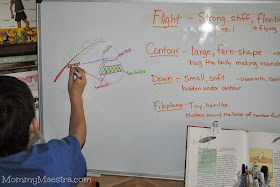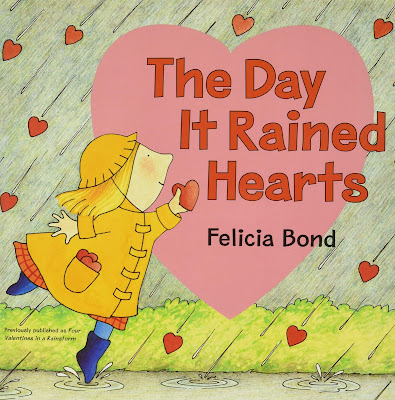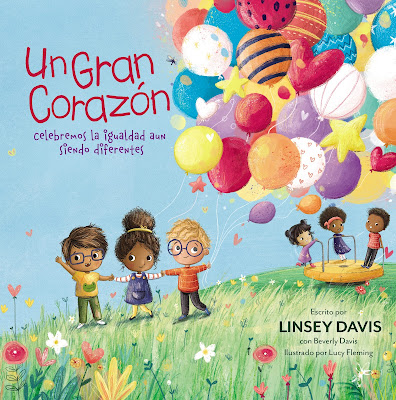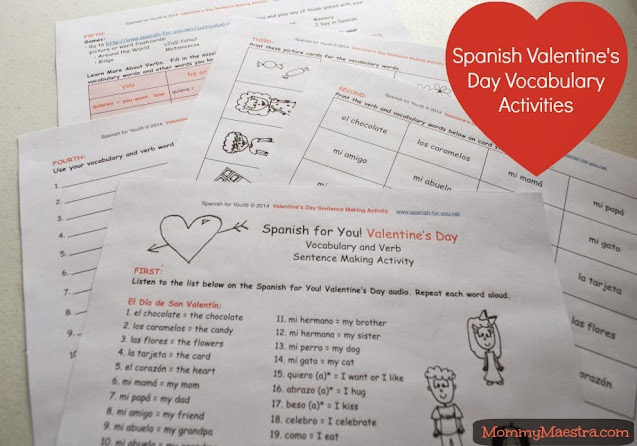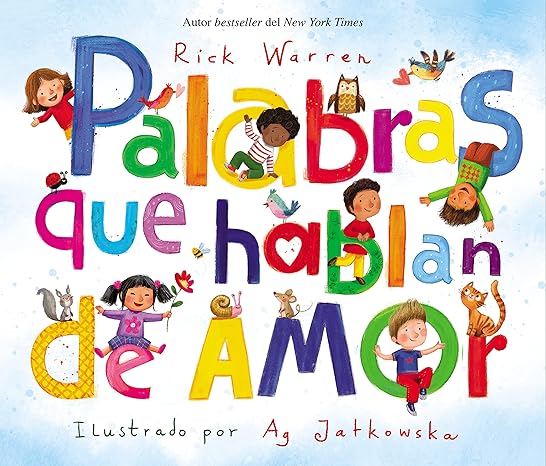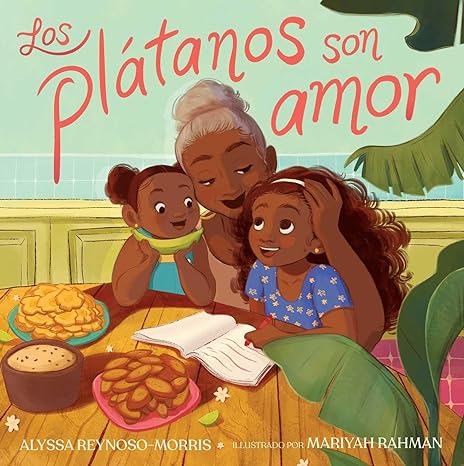Pages
▼
Thursday, February 27, 2014
Psst...There's a Big Sale Going On!
Don't miss the awesome sitewide sale going on today and tomorrow over at TeachersPayTeachers! You can find some great deals, including a discount on all of the products in my own store.
It's a good time to stock up, no?
Wednesday, February 26, 2014
State Farm Neighborhood Assist Grants
This is part of a sponsored collaboration with Latina Mom Bloggers and State Farm. However, all opinions expressed are my own.
I love it when I find out about kids who are doing social good and giving back to our comunidad. Especially when it provides a wonderful opportunity for other people - both young and old - to realize their dreams. So I'm happy to tell you about the State Farm Neighborhood Assist® program, in case it provides YOU or your familia with an opportunity to make a difference.
Do you have an awesome idea that would improve the lives of the people in your community? Maybe you want to create a community garden, or build a safe playground for your children to play in. Perhaps you have a lot of elderly in your community who would benefit from a senior center or emergency clinic. Maybe your local library doesn't have many bilingual books for your family to read or the staff to offer bilingual programs, and they don't have the money to fund them. Pues, you need to know about the Neighborhood Assist's grants then! NA is a youth-led philanthropic program that connects people with fabulous ideas to local nonprofits for support. In addition, if YOUR idea is selected, you can win a $25,000 grant to help get your idea off the ground. The organization is awarding 40 (forty!!) of these $25k grants this year.
¡Oye! They'll begin accepting submissions this coming Monday, March 3rd! ¿Y sabes qué? They want submissions that benefit the Hispanic community! Starting Monday, you can submit your idea using their free State Farm Neighborhood Assist Facebook app.
The State Farm Youth Advisory Board is made up of about 30 students across the country. The 17 to 20 year olds are responsible for helping State Farm manage a 5 million a year service-learning initiative
Once they receive a total of 4,000 cause submissions, the State Farm Youth Advisory Board will begin the process of reviewing them and identifying the top 200 causes. But you better SUBMIT EARLY because even though the deadline is March 23rd, submissions close when they receive 4,000 (which usually happens before the 23rd). They'll announce the top 200 on April 28 and anyone who has the free Facebook app can vote for their favorite causes with up to 10 votes per day until May 16. The 40 causes with the most votes will receive a $25K grant for their cause.
When researching the program, I found this inspiring guest post over on Type A Mom about a teacher who submitted her project to build a geodesic dome greenhouse at her school allowing her 6 - 8th graders the opportunity to grow organic food that they then donated to a local family homeless shelter. The students are low-income inner city kids who were able to learn about serving their community as a result of the project. I encourage you to read the short but moving post, and check out the great photos.
When researching the program, I found this inspiring guest post over on Type A Mom about a teacher who submitted her project to build a geodesic dome greenhouse at her school allowing her 6 - 8th graders the opportunity to grow organic food that they then donated to a local family homeless shelter. The students are low-income inner city kids who were able to learn about serving their community as a result of the project. I encourage you to read the short but moving post, and check out the great photos.
¡Me encantaría ver a mas comunidades Latinas beneficiar de esta gran oportunidad!
Tuesday, February 25, 2014
School Readiness Tips for Parents
Understanding that the first five years of a child’s life are a time of physical, emotional, social and cognitive growth, parents and caregivers should look for resources and tips to help prepare children to enter school, including the following tips from PBS KIDS:
1. Be involved and make learning fun. Research shows that children are more likely to succeed academically and socially in school when their parents or caregivers actively support and encourage them to take pleasure in learning.
2. Talk with your child. Young learners need to be in language rich environments. Talking to your child about a book you read together or exploring an educational app together are ways to help your child build language and acquire the skills needed to learn how to read.
3. Help your child explore. Encourage kids to ask questions and try different ways of using materials, offering them a wide range of new experiences. When choosing media, follow your child’s interests and look for educational content that builds on their excitement.
4. Let your child experiment. Kids experience great satisfaction when they try and finish new things. Give them a bit of support when they need it, but be careful not to take over completely. Simple household tasks, art projects and experimenting with various musical games are all ways that children can experiment and build confidence.
5. Nurture your child’s natural curiosity. Allow your child to chase a butterfly or watch a hermit crab peep out of its shell. Encourage them to investigate everyday objects as a way to develop curiosity and an interest in learning more. Look to media resources and characters like Curious George and Daniel Tiger from PBS KIDS, who help kids discover the world around them.
Disclosure: I am a PBS KIDS ambassador, which means that they provide me with educational information like the infographic and tips shown above to share with my readers.
Sunday, February 23, 2014
Spanish Immersion Homeschool Resource
For those of you homeschooling your children with full-immersion Spanish, this is a gold mine of Spanish resources. The Mexcian department of education has an amazing online account with Issuu and they've uploaded 641 publications, all of them Spanish texts as far as I can tell (I haven't gone through all of them). They appear to all be centered around 1st through 6th. Lots and lots of great information here. Obviously, the history is focused on Mexican history, but you should be able to use the math, science and other resources for homeschooling here in the U.S.
I haven't used any of these, so if you have, please share your thoughts. Of course, you should look through it first and see if it is of use to you. Just for fun, I'm sharing one book below and will try to remember to do so every now and then as a reminder.
**For those of you looking for a comprehensive list of Spanish learning programs, click here to see my post dedicated to them.
Enjoy!
Powered by
Issuu
Publish for Free
Thursday, February 20, 2014
Making Chores Easier with Dyson DC65 & Best Buy {PRINTABLE}
This post is sponsored by Dyson and Best Buy and includes a review of the new Dyson DC65.
Does your child have assigned chores at home? Mine do. Since we live on a small farm, my husband and I rely on their help with all the chores that need to be done around here.
But you don't have to live on a farm in order for your child to help out with the housework. And I find that by giving my kids daily duties that they are responsible for is a great way to teach them a sense of responsibility and to be neat and organized. Now I'm not saying my kids ARE neat and organized, BUT we're learning those skills every day through small assignments.
My kids are close enough in age that we trade chores back and forth every other day. So for example, on Mondays, Wednesdays and Fridays my daughter feeds the chickens, prepares the table before meals, and folds up blankets, while my son empties the recycling containers, wipes off the table after meals, and cleans the stairs. Then on Tuesdays, Thursdays, and Saturdays they switch. Once a week one of the kids dusts while the other one vacuums. And every evening the kids take turns bottle feeding the calves, or they do it together, my daughter feeding one little calf while my son feeds the other. During these cold winter months, they are also in charge of collecting sticks for kindling for our wood stove, and sometimes they stack wood after their Daddy finishes chopping it.

Anyway, I've put together a few blank bilingual chore charts for you to use, if you'd like to. They are handy for helping us to remember to do the little assignments and establish a sense of pride, I think, in knowing that they've contributed to the running of our household.
But you don't have to live on a farm in order for your child to help out with the housework. And I find that by giving my kids daily duties that they are responsible for is a great way to teach them a sense of responsibility and to be neat and organized. Now I'm not saying my kids ARE neat and organized, BUT we're learning those skills every day through small assignments.
My kids are close enough in age that we trade chores back and forth every other day. So for example, on Mondays, Wednesdays and Fridays my daughter feeds the chickens, prepares the table before meals, and folds up blankets, while my son empties the recycling containers, wipes off the table after meals, and cleans the stairs. Then on Tuesdays, Thursdays, and Saturdays they switch. Once a week one of the kids dusts while the other one vacuums. And every evening the kids take turns bottle feeding the calves, or they do it together, my daughter feeding one little calf while my son feeds the other. During these cold winter months, they are also in charge of collecting sticks for kindling for our wood stove, and sometimes they stack wood after their Daddy finishes chopping it.

Anyway, I've put together a few blank bilingual chore charts for you to use, if you'd like to. They are handy for helping us to remember to do the little assignments and establish a sense of pride, I think, in knowing that they've contributed to the running of our household.
Because my son suffers from some serious allergies to mold and other allergens, I have to be mindful of what chores he can do and the tools he uses to do them.
That is why I'm really excited about the new Dyson DC65.
That is why I'm really excited about the new Dyson DC65.
The Review
When we got the new Dyson DC65 Animal it was sort of like my fairy godmother granted my biggest wish: a deep cleaning vacuum that can handle the high amount of traffic and resulting debris that goes through my house and floors (small farm, remember?). From grimy dirt, leaves, twigs, pine needles, and even some stuff from the cow pen that we won't mention here, my carpet collects all sorts of stuff on a daily basis.
My family think I'm a vacuuming maniac because I can frequently be seen lugging a heavy vacuum around the house several times a day. I may or may not have a glassy look in my eye when I do it. (I'm not OCD, I just am determined to try and have clean carpets.) My kids "vacuum" once a week, but our old one is a monster that's pretty heavy to push, especially on rugs. Instead, they prefer to vacuum the stairs with our little cordless Dyson Digital Slim. (And, okay, I've been using that amazing little cordless on the rest of the carpet lately instead of The Monster.)
Anyway, if your home is like mine, it has a combination of floors - some carpet, some hardwood, some tile, etc. Well, I was super excited when I found out the DC65 does them ALL.
Not only that but it is SO LIGHTWEIGHT that my kids can easily push it around. It makes this particular chore easier for them and its modern design delights my robot-loving children making vacuuming suddenly fun again. (Vacuuming is now accompanied by lots of R2-D2-type beeping going on.)
Not only that but it is SO LIGHTWEIGHT that my kids can easily push it around. It makes this particular chore easier for them and its modern design delights my robot-loving children making vacuuming suddenly fun again. (Vacuuming is now accompanied by lots of R2-D2-type beeping going on.)
When I first saw the DC65, I was skeptical because compared to our old one, there just doesn't seem to be a whole lot to the vacuum. I mean, the box says it has twice the suction (180AW of suction, to be precise) of any other vacuum, so you would think it would be a gargantuan monster, pero no, it's smaller. But the new configuration of bristles dig deeper into carpets to remove more dirt. When I turned it on and started vacuuming for the first time, I listened with a sort of horrific fascination to all the stuff in my carpets and rugs getting SUCKED away. (My Tía Visi's voice echoed inside my head: "¡Ay! ¡Qué asco!") AND I can use the long-reach telescopic wand to swish away all those telarañas that gather dust in the corners of my rooms.
I also love that it has a tangle-free turbine. If you only knew how much time I've spent with a pair of scissors and needle-nose pliers trying to remove all the hair, thread, yarn, fabric strips, and even pipe cleaners that inevitably fall to the floor in this house only to get sucked up into the vacuum cleaner and wrapped around the turbine. But no more! Because the counter-rotating heads with brushes remove hair and dirt. The DC65 is built to survive 10 years, and for the price, it better last that long. And if it does? Then it is totally worth it.
The DC65 is currently only available at Best Buy stores across the country. You can buy the Multi-Floor for $499, or the Animal (comes w/ TFT and dusting brush) for $599, or the Animal Complete (comes with extra tools and Zorb plus TFT and dusting brush) for $649. And it comes in three colors: Platinum, Purple, and Fuchsia.
Disclaimer: I received this product for review purposes. All thoughts and opinions expressed in this post are strictly mine.
Wednesday, February 19, 2014
10 Ways to Improve your Child's Spanish Vocabulary at Home
It is no secret that raising bilingual children is not easy. Although here at Mommy Maestra, some of us are first, second (or more!) generation American, we happen to have bilingual kids! Lately, as my 21 month-old is starting to speak and as my seven year-old is using scientific words in English that I have no idea how to translate, my frantic Google search is often a reminder to seguir adelante with my efforts to continue to teach Spanish to my three boys. Their English is fantastic and I want them to feel just as confident when speaking Spanish.
Here are 10 tips I want to share to help you improve your child's Spanish vocabulary without you having to leave your home:
1) Speak: Habla, habla, habla. Even if your family spends the majority of the day speaking English, be conscious of it and switch over to Spanish whenever you can or when it feels right. For me, getting my boys' attention, transitioning from one activity to another, or when snuggling with them, calls for el español!
2) Read: Of all the books we own, about 40 percent of them are in Spanish. The boys love for me to read to them and when they reach for a book, they don't see or hear language. They pick a book because they love it and the more they hear the ones in Spanish, the better for their vocabulary. Check out Latina for Latino Lit for great titles!
3) Call/Skype/Facetime with family: Whether you live close to family or not, try to have your children speak to family members with whom you only speak Spanish. My boys know that their Tita will not speak English to them and I don't mind if their Spanish is not perfect because they have no other way to communicate. No one laughs or corrects when they make mistakes. Family will support your child's bilingual journey.
4) Apps: I don't know how many times a day my boys ask for my mobile phone or papi's iPad. It's okay to bargain with them. Half the time I say, "only if you go on a Spanish app." It works! Click HERE for five of Mommy Maestra's picks.
5) TV: Just like the app rule, we negotiate the TV's language. My husband and I record shows the boys like that just happen to be on the Spanish-language networks. The other day, our oldest went around saying, "es muy complicado," because the phrase was introduced in Pocoyo.
6) Games: We recently reviewed eeBoo's Spanish Bingo because it has been a hit in my Spanish enrichment program at my son's school and here at home. Simple vocabulary games like Lotería, Zingo and Scrabble are great vocabulary builders too and so much fun!
7) Play dates: Invite your Spanish-speaking acquaintances and friends over for a play date. We don't live in Latino community but when we find other Spanish-speaking families, we automatically click! Having your children see and hear kids who have similar backgrounds eases them into practicing Spanish and helps them build their confidence.
8) Music: Dance party, anyone? Crank up your favorite Latino tunes for your babies. Music is a huge part of culture and when a household plays Spanish music, be ready to hear little voices singing and bodies shaking!
9) Text/Email: If you have a child who is already writing, you will find that you may not get your kiddies to really appreciate traditional writing on paper or workbooks. Although, I have my oldest practice Spanish in that way, we try to mix things up with a little bit of fun with my smart phone or computer.
10) Talk about the world: Having your children understand that there are thousands of languages that are being spoken daily says so much about Spanish being the second most spoken language in the world! Why not give it a little extra effort? That fact alone has motivated me some more. Adelante!
How do you help improve your child's Spanish vocab? Please share!
Betty Galvan, is writing "for smart and stylish moms" over
at My Friend Betty Says... She is a teacher and mother to three fun little boys.
How do you help improve your child's Spanish vocab? Please share!
--------------------------------------
Betty Galvan, is writing "for smart and stylish moms" over
at My Friend Betty Says... She is a teacher and mother to three fun little boys.
Tuesday, February 18, 2014
How to Introduce your Child to a Microscope
This post uses affiliate links.
For Christmas last year, a wonderful friend bought my kids their first microscope. I always worry that as a homeschooler, I'm not granting my kids enough access to fancy tools and such to help them learn. But the reality is, I don't remember ever using a microscope in school when I was a kid! That doesn't necessarily mean that I didn't, but if I did, the experience apparently wasn't memorable.
But my kids are loving it. And I suspect that it is because they don't have limited access to it and can use it however they like. So I thought I would share how we are using it and what (few) accessories we bought to go with it.
Parents: You don't have to be a homeschooler to nurture your child's love of science with a microscope!
So here is what we have: (These are affiliate links)
- AmScope M100C-LED 40x-1000x All-Metal Student Cordless LED Field Biological Compound Microscope with All Optical Glass Lenses
- The World of the Microscope
- Elenco Slide Making Kit
- AmScope PS25 25pc Assorted Specimen Collection of Prepared Microscope Slides Glass Slide with Storage Case
- A blank notebook to serve as a science journal
Since the microscope was a gift, I purchased the accessories separately, but you can buy a kit to make things easier (and less expensive).
Before we started off with our microscope usage, we opened up our Usborne Science book, The World of the Microscope: A Practical Introduction with Projects and Activities. I love this book. It starts off with a history of microscopes and includes really fun activities for using a magnifying glass. From there it goes on to the different types of microscopes that exist and then begins with how to use your own microscope, including where to set it up, lighting, and how to look at slides. And then the projects begin!
One of the first microscope projects involved looking at a feather. It is just a short section in the book, but - WOW! - we certainly got a lot out of this.
I started off having my kids learn how to focus the microscope and then take turns looking at the feather under various magnifications. The microscope above comes with three lenses that magnify the object 4x, 10x and 40x. I had them draw what they saw in their new science journals...
I started off having my kids learn how to focus the microscope and then take turns looking at the feather under various magnifications. The microscope above comes with three lenses that magnify the object 4x, 10x and 40x. I had them draw what they saw in their new science journals...
I also happened to have The Feather Book by Karen O'Connor (aff), which helped me take this to another level. After reading more about the types of feathers that birds have, my son drew a diagram of a typical feather...
From here, it is just a quick jump into exploring everything else. Snow, leaves, hair, cotton balls, pond water, pine needles, salt, spices... the list goes on and on. Fortunately, so does my children's curiosity and I bet your child's does, too!
Do you follow MommyMaestra on Facebook? If so, you'll find a little gift over there from me to you to help you with your family's microscope adventures!
Do you follow MommyMaestra on Facebook? If so, you'll find a little gift over there from me to you to help you with your family's microscope adventures!
Monday, February 17, 2014
Zoobean's New Digital Service for Families
I want to start off the week by giving la bienvenida to MommyMaestra's newest sponsor, Zoobean. This company is the perfect example of the ingenuity of moms like us, who understand the needs of parents in our modern times.
If you haven't heard of it, Zoobean is a service that provides custom-curated books and apps that are hand-picked specifically for your child. When you subscribe to their service you give your child's age, then you choose their reading level, and the types of books that interest him or her. Zoobean is best known for delivering carefully chosen hardback or paperback books to your home (more about that later), but they've recently expanded to offer a new digital service for families.
The digital subscriptions send weekly book and app recommendations to your email address. Their email includes a title recommended specifically for your child based on his or her interests (that you selected during the sign up process), as well as a reading guide to accompany the book. Their email also tells you who at Zoobean chose the book. (I really love this personal touch.) App recommendations are linked to the Apple App Store and Amazon for Android.
I received subscriptions for my two kids to review here on MommyMaestra. My subscription began this past week when I received separate emails for them both. My son's book recommendation was "The Fantastic Undersea Life of Jacques Cousteau" by Dan Yaccarino. I honestly did not even know this book existed. But I was sold from the moment I read the title and a quick glance at the reading guide convinced me to head right over to Amazon to buy the Kindle version.
(I have to tell you up front that while I am a big - BIG - champion of literacy and reading, I have to admit that I prefer paper books and have not used digital books very much with my kids. That's mostly due to the fact that I felt they were too young to branch into that digital space and I wanted to make sure and develop their love of a good hardback or paperback first. This has been accomplished, so after thinking long and hard about it, I'm slowly venturing into eBooks with my kids for school projects. We've used them before, but only here and there.)
Anyway, the point is that I could have easily just ordered the paperback or hardback version of the book, and if you sign up, you certainly can do that too. Or even borrow the title from your local library. But I was impatient, and I thought this would be a good start to using eBooks in our homeschool lessons.
My son was, of course, delighted to read the biography. Actually, my daughter was too. So we did. And I was able to use the reading guide that Zoobean provided to discuss the illustrations, new vocabulary, and monitor my children's reading comprehension. But the best part was the activity included at the end of the guide. Check out our little creation:
So if you are looking for a personalized reading experience for your children, I highly recommend Zoobean. With SO MANY children's titles available today, I really love it when someone else does the legwork for me, researching the titles and then suggesting ones that my children will like. It saves me time and narrows down my choices.
But you don't have to take my word for it. You can sign up for a FREE TRIAL and try it yourself!
Disclosure: Zoobean is a sponsor of this website. However, all opinions are strictly my own.
Friday, February 14, 2014
Preschool Songs about Hearts in English and Spanish
Happy Valentine's Day!
To celebrate, I thought I'd share a list of preschool songs about hearts that are available on YouTube. I've grouped them by language - English and Spanish - so just scroll down to the language that suits your needs and hit play!
This post contains affiliate links.
How to Spell "Heart" with Kiboomu
English Songs about the Heart for Preschoolers
How to Spell "Heart" with Kiboomu
heart shape song
With My Heart | Kids Songs | Super Simple Songs
Spanish Songs about the Heart for Preschoolers
Con Mi Corazón | Canciones Infantiles
Cabeza, Codo, Corazón - Canción de la letra C - Canta Las Letras - Sonido Ca Co Cu
Emoticantos: Mi Corazoncito
Corazón de Melón - VALENTINA Y LOS VALIENTES
Other Heart-Themed Resources
Here are a few other resources with a heart theme that I have enjoyed with my own children and recommend.
The Day It Rained Hearts
by Felicia Bond
by Felicia Bond
by Monique Gray Smith
by Linsey Davis
Other Posts You May Enjoy
Thursday, February 13, 2014
Celebrate the 100th Day of School with Me on Twitter
I'm super excited that tomorrow we'll be celebrating our 100th day of school. You may remember me mentioning it a few days ago and that's because I've been looking for ideas of activities or crafts to do to celebrate with the kids. Since it is Valentine's Day, I'm planning some fun group activities because we'll be celebrating with our fellow homeschool families at our annual Valentine's Day party.
I'm loving this idea of using 100 toothpicks and 100 marshmallows to build a structure. The trick would be building it before all the marshmallows were eaten! And this activity uses 100 plastic cups instead.
I know that many of you will be celebrating the 100th day of school, too, if you haven't already. So I invite you to join me tonight for a Twitter Party with PBS KIDS and @la_story. We'll be sharing tips and activities for you to consider. Just join us from 9 - 10 pm ET and use the hashtag #100thDay.
See you then!
I'm loving this idea of using 100 toothpicks and 100 marshmallows to build a structure. The trick would be building it before all the marshmallows were eaten! And this activity uses 100 plastic cups instead.
I know that many of you will be celebrating the 100th day of school, too, if you haven't already. So I invite you to join me tonight for a Twitter Party with PBS KIDS and @la_story. We'll be sharing tips and activities for you to consider. Just join us from 9 - 10 pm ET and use the hashtag #100thDay.
See you then!
Other Posts for Celebrating the 100th Day of School
Wednesday, February 12, 2014
Bilingual Valentine's Cards
Are you looking for some last-minute printable Valentine's cards for your kids to sign and give? Don't forget that I have this fun set in my TpT store. You can slip them onto pencils, or just give them out with treats!
I've also got a fun bilingual set of Valentine's decorations that includes a banner, mobile instructions & images, cupcake toppers, napkin and bottle wrappers, and valentines or place cards.
I think we'll be making these tomorrow for our homeschool Valentine's party!
Tuesday, February 11, 2014
Free Valentine's Day Cards from Little Passports
This post contains affiliate links. When you click on them, you help support the running of this site.
Hooray for Valentine's Day! It's one of my kids' favorite holidays. We get together each year with our homeschool group to exchange valentines and have a little party. So we're always looking for new valentines to share with the other families.
Today I get to share something special with you - Little Passports has Valentines Day Cards for Everyone!
Today I get to share something special with you - Little Passports has Valentines Day Cards for Everyone!
With Valentine's Day only a few days away, I have some Little Passports Valentine's Day Card Printables that your child can share with his/her friends. These are perfect for homeschool groups too!
I love that the cards are multicultural. Have you ever wondered how to say ‘I love you’ in German? How about in Tagalog? Our Little Passports Valentine’s Day cards include ‘Love’ and ‘I love you’ in languages from around the world! To share the love, simply download, print, and pass one to your valentine! Here are some Little Passports "I Love You" Translations From Around The World!:
Jeg elsker Dig: Danish
Ik Hou Van Jou: Dutch
Te Amo: Spanish
I love you: English
Je T'aime: French
S'agapo: Greek
Sarang Hae Yo: Korean
Ech hun dech Gaer : Luxembourgish
Mahal Kita: Tagalog
Iay Ovlay Ouyay: Pig Latin
Saya Cinta kamu: Indonesian
Mina Rakastan Sinua: Finnish
Ich Liebe Dich: German
Wo Ai Ni: Chinese
Ya Tebya Liubliu: Russian
Aishiteru: Japanese
Hum Tumhe Pyar Karte hae: Hindi
Little Passports enables you to teach your child about the hundreds of different cultures around our world and around the USA! Each month, a package addressed to your kids (which they LOVE) arrives full of little goodies like stickers for their own passport, activity sheets that teach them about major landmarks around the world and gets their brain going with fun word scrambles! Little Passports even shares fun recipes that you can cook up with your kids to turn them into little chefs who know all about foods from different cultures. Subscriptions start at just $10.95/month which is another bonus! This is also the perfect resource for anyone who homeschools out there. Let me know what you think after you get set up with your own Little Passports subscription.




Disclosure: I'm a Little Passports ambassador which allows me to share special printables and information with you. All thoughts and opinions are my own.
Monday, February 10, 2014
Free Valentine's Sentence Building Activity Sheets in Spanish
Need some Spanish Valentine's Day activities for your young language learners? Grab our free printable sentence builder!
Are you gearing up to celebrate Valentine's Day with a Spanish twist? Look no further! Our sponsor, Spanish for You!, brings you an exciting opportunity to infuse language learning into the season of love with our free printable activity set. This 5-page bundle is not only a fun way to commemorate El día del amor y la amistad but also a valuable tool for expanding your Spanish vocabulary and honing your sentence-building skills.
Boost Your Vocabulary with Spanish Valentine's Day Activities
Holidays present fantastic opportunities to enrich your language skills. By incorporating themed vocabulary and activities, you can immerse yourself in the culture while learning new words and expressions. Our Valentine's Day activity set introduces learners to essential vocabulary associated with the holiday. From terms like "corazón" (heart) to "amor" (love), each word is chosen to boost language learning.
Engage in Interactive Learning
Sentence building is a crucial aspect of language acquisition, and what better way to practice than with engaging activities? Our activity set includes worksheets where learners can construct sentences using the newly acquired vocabulary. By putting words into context, students deepen their understanding and retention while gaining confidence in their language abilities.
Fun and Games for Language Development
Learning should be enjoyable, and our activity set ensures just that! In addition to vocabulary and sentence-building exercises, we've included game ideas to make the learning process interactive and exciting. Whether it's a matching game with vocabulary cards or a race to conjugate verbs associated with Valentine's Day, these games add an element of fun while reinforcing language concepts.
Master Pronunciation with Audio Support
Proper pronunciation is key to effective communication in any language. That's why our activity set comes with an accompanying audio file, allowing learners to listen and practice the correct pronunciation of words and phrases. With the help of native speakers, both parents and children can refine their accents and sound more natural in their Spanish conversations.
This Valentine's Day, dive into the world of Spanish language learning with our free printable activity set. Whether you're a beginner or looking to brush up on your skills, this resource offers a comprehensive and enjoyable way to celebrate El día del amor y la amistad while expanding your linguistic horizons. Download your copy today and embark on a journey of language discovery and love!
Books in Spanish for Valentine's Day
Children's picture books are a great way to practice reading simple Spanish and boost vocabulary. Here are a few that are perfect for Valentine's Day.
by Jenny Torres Sanchez
by Rick Warren
by Mrinali Álvarez Astacio
by Alyssa Reynoso-Morris
You may also enjoy...
Sunday, February 9, 2014
Free Preschool Printables in Spanish About Emotions
Disclosure: This post contains affiliate links.
This season's weather has our moods swinging back and forth like a crazed pendulum. One day it's 70 degrees and the next it is negative one. So this month's emotion-themed printables from our sponsor, Monarca Language, are absolutely appropriate!
The Spanish vocabulary cards focus on emotions: from feliz to triste to emocionado and more. Print them on cardstock, then have your child color them in and cut them out. You can laminate them to help them last longer. Then take turns telling a story with your cards.
If you've been saving your cards from the previous months, then you can encourage your child to mix them all together to create more elaborate stories.
If you've been saving your cards from the previous months, then you can encourage your child to mix them all together to create more elaborate stories.
The second activity sheet has your child identify and complete the pattern using facial expressions to display emotions.
Saturday, February 8, 2014
10 Ways to Celebrate the 100th Day of School from PBS KIDS
As we approach the 100th day of school in our homeschool, I've been looking for ways to celebrate. You can find my Pinterest board full of fun ideas here.
But really, I love this infographic from PBS KIDS with 10 great ideas to celebrate the day with your kids. What better way to celebrate the 100th day of school than with activities all about the number 100? Below are fun ways the whole family can get together and commemorate the 100th day of learning this year!
Additional games and activities can be found at www.pbskids.org/peg. Educators can also find classroom activities at www.pbskids.org/learn.
Does your family celebrate your children's 100th day of school?
Additional games and activities can be found at www.pbskids.org/peg. Educators can also find classroom activities at www.pbskids.org/learn.
Does your family celebrate your children's 100th day of school?
Other Posts for Celebrating the 100th Day of School
Disclosure: I am a PBS Ambassador which simply means I get access to information and resources that I can share with you. I was not compensated for this post and all thoughts and opinions are mine.
Friday, February 7, 2014
Demolición for Young Truck Lovers
Demolición
by Sally Sutton
illustrated by Brian Lovelock
Do you have a young truck lover in your casa? Then you might be interested in this series by Candlewick Press. The series by Sally Sutton has been translated into Spanish and the latest board book is Demolición, a book for little truck lovers.
This fun little board book describes the process of demolishing a building from start to finish. The illustrations are colorful and full of action, complementing the text perfectly. Each double page focuses on a different aspect of tearing down the building - and most of them feature big trucks and tractors, such as trackhoes and cranes.
The words follow the same three-line pattern, and young children will benefit from the repetition.
(Sample passage)
Gira la bola. Gira la bola.
This fun little board book describes the process of demolishing a building from start to finish. The illustrations are colorful and full of action, complementing the text perfectly. Each double page focuses on a different aspect of tearing down the building - and most of them feature big trucks and tractors, such as trackhoes and cranes.
The words follow the same three-line pattern, and young children will benefit from the repetition.
(Sample passage)
Gira la bola. Gira la bola.
Zumba, golpea, dale más.
Haz que caiga cada piso.
¡Bum! ¡Bang! ¡CRACH!
Dale al muro. Dale al muro.
Pega, rompe, dale más.
Temblará hasta caer.
¡Clonc! ¡Crac! ¡Plam!
This book is great for toddler and preschoolers who are building their vocabulary and learning pre-literacy skills. And it is sturdy enough for curious little fingers who sometimes drop things.
This title will be released on February 11th, but you can pre-order it on Amazon.com.
Thursday, February 6, 2014
Free Sample Pages of Spanish Phonics Centers for Beginning Readers {PRINTABLE}
This month's freebie from our sponsor Lectura para niños is a great resource for children learning to read in Spanish and their teachers!
Leah says...
This is a portion of my Phonics Centers – Level 1.
This is the same game, but in digital format using the MIMIO software that can be downloaded at www.mimio.com.
Centro fonéticos: Haciendo palabras – nivel básico. (43 pages - color) (Phonics Centers: Making words - Beginning Level) 4-6 sound words
Contains 43 pages of sequentially taught word/picture cards. In themes 2-10, each theme teaches 2-3 new letters making 4-6 sound words beginning with two syllable words progressing to three syllable words. In theme 1, you have an overview of the letters and beginning syllables. In theme 2-10, the students will focus on blending and segmenting words into sounds and syllables both auditorily and visually.
o Theme 2, (Reviews: A, E, I, O, U) – focuses on words with new consonants M, S, P
o Theme 3, (Reviews: A, E, I, O, U, M, S, P) – focuses on words with new consonants T, C, N
o Each theme 2-10 teaches 2-3 new letters, while reviewing letters from previous themes.
Contains 43 pages of sequentially taught word/picture cards. In themes 2-10, each theme teaches 2-3 new letters making 4-6 sound words beginning with two syllable words progressing to three syllable words. In theme 1, you have an overview of the letters and beginning syllables. In theme 2-10, the students will focus on blending and segmenting words into sounds and syllables both auditorily and visually.
o Theme 2, (Reviews: A, E, I, O, U) – focuses on words with new consonants M, S, P
o Theme 3, (Reviews: A, E, I, O, U, M, S, P) – focuses on words with new consonants T, C, N
o Each theme 2-10 teaches 2-3 new letters, while reviewing letters from previous themes.
Directions:
Cut each strip of letters.
Tape the picture to the front of the envelope, the letters go inside.
How to play:
Pull the letters out of the envelope,
Students segment the word into syllables first,
Form the correct first and second syllable at the top of the page.
Pull letters down one at a time to practice segmenting the word into sounds.
Pull letters down one at a time again to reinforce segmenting the word into sounds.
Student writes the word on their white board, and or cardstock.
We practice these words all week, once the students have mastered the letters from the theme and have been able to successfully segment and blend words, we move on to the next theme. The next theme reviews the letters from the previous theme and adds 2-3 new letters and words that you can form with these letters.











